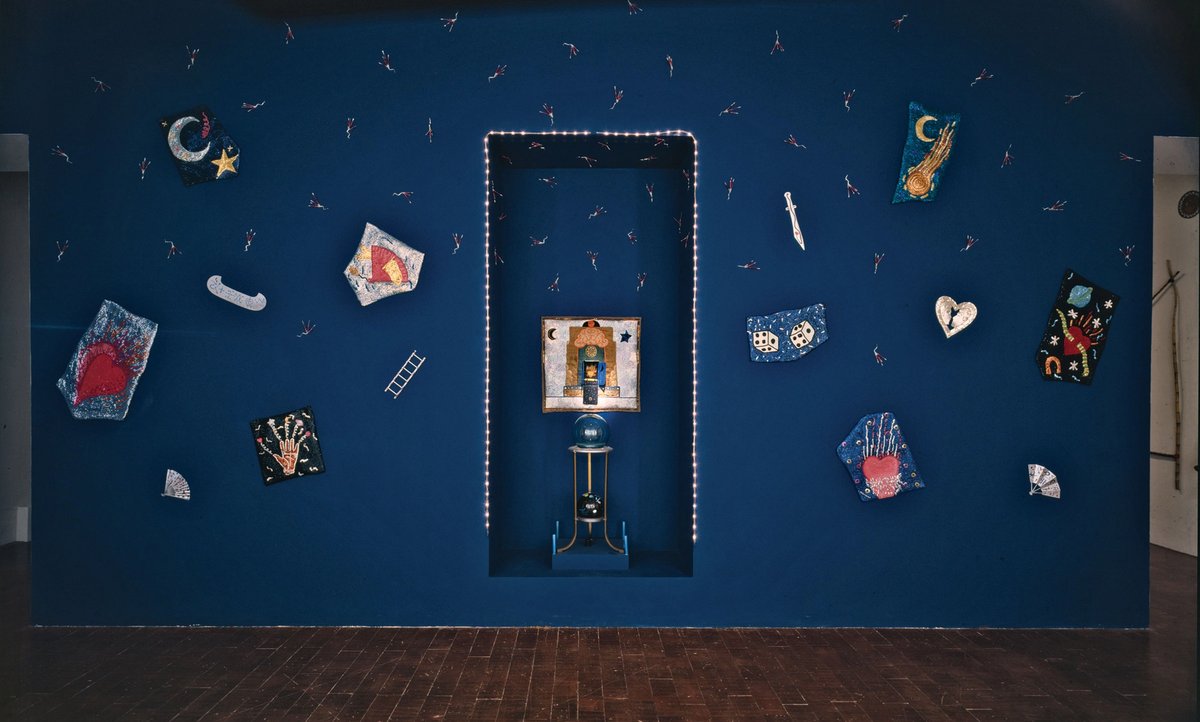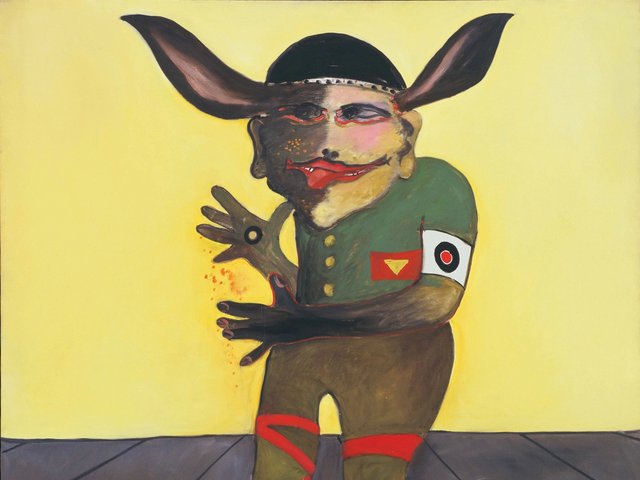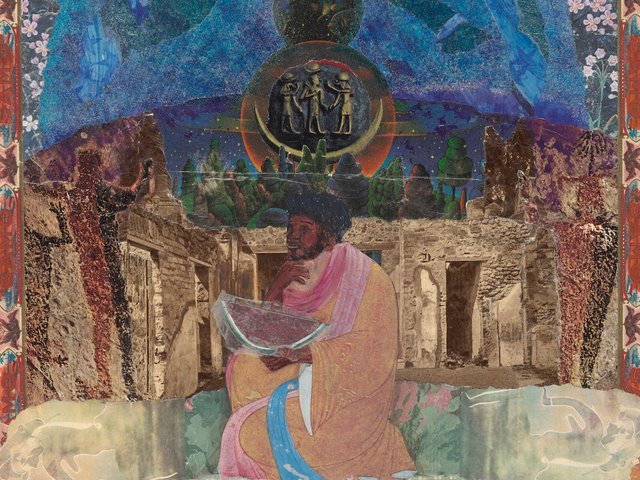Betye Saar: Serious Moonlight at the Institute of Contemporary Art, Miami (ICA Miami) explores an understudied period of the artist’s career. In the 1980s and 90s, the celebrated artist—who is best-known for her sculptural assemblages centred on themes of spirituality, cosmology and the African diaspora—made a series of installations that dimensionally and philosophically expanded on the “altars” she began creating in the 1970s. The mixed-media sculptures were inspired by her research into animist religious practices during trips to Nigeria, Haiti and Mexico.
The concept of “art-making as a ritual”, as Saar describes it, emerged in her practice during this time; she made her first altars beginning in 1973 with found objects and organic materials, and invited visitors to leave offerings. The later installations, eight of which are featured in this exhibition, are more complex, room-sized works depicting scenes that immerse the viewer in Saar’s esoteric world.
It’s interesting that there are still some gaps in knowledge about Saar’s practiceStephanie Seidel, curator
The works are “beautiful, strong and provide new perspectives on Saar’s practice, but they have received little institutional attention”, says Stephanie Seidel, the associate curator of the museum. “When one thinks about Betye Saar, works such as The Liberation of Aunt Jemima (1972) and Black Girl’s Window (1969) come to mind, which are legendary works that gave her great visibility but have overshadowed other scholarship on her practice.”
The Los Angeles-based nonagenarian artist has written extensively about her influences, which are visible throughout the show. For example, the installation The Trickster (1994) contains a quotation from the American author and voodoo researcher Zora Neale Hurston, who wrote: “Voodoo is a blade that cuts both ways.” Saar also conceptually references the writings of the art historian Arnold Rubin, who dissected ideas informing the Western display of African sculpture. “Rubin argued that African sculpture has power and energy and that it’s more than a decorative object; it’s seductive and more visual, something Saar has always emphasised in her work, especially in her installations,” Seidel says.
While most of the installations were never included in major exhibitions devoted to Saar, there are some exceptions. The work Oasis (1984) was featured in the Los Angeles Museum of Contemporary Art’s larger survey of Saar’s assemblages in 1984, and the work House of Fortune (1988)—an installation that references a séance, including a table and chair entangled with dried flora and a hand-sewn textile work depicting a palm installed on the wall at the centre—was shown at the US embassy in Manila in 1988 as part of Saar’s collaboration with the now-defunct US Information Agency, a foreign affairs branch that oversaw the international arts programme for the US government.
“It’s interesting that there’s still some gaps in knowledge about Saar’s practice, considering she is such an important figure who has influenced so many generations of artists, including a number of the artists the ICA Miami has championed over the years,” Seidel says. “While all of these works are spiritually complex in nature, there’s also an autobiographical and strong visual element to them, offering many different entry points for audiences.”
• Betye Saar: Serious Moonlight, Institute of Contemporary Art, Miami, until 17 April 2022




